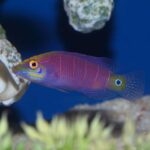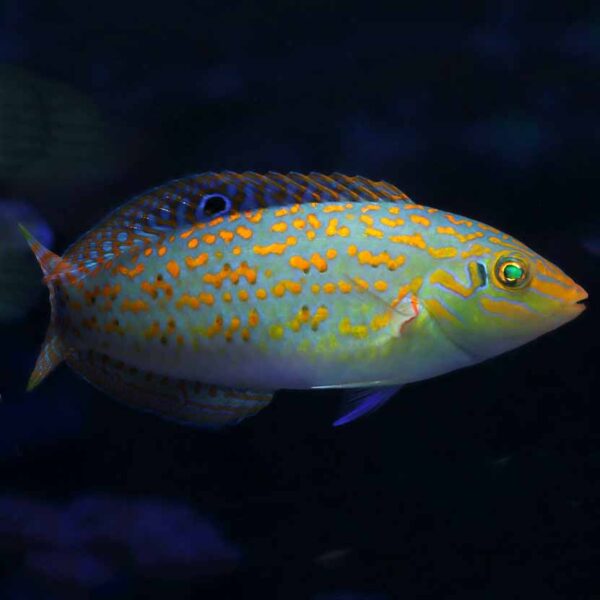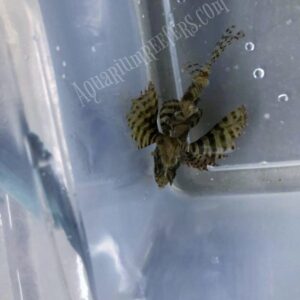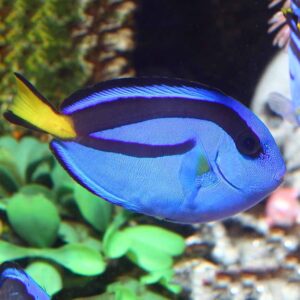Description
Timor Wrasse, Halichoeres timorensis, are amazing additions to marine tanks. These beauties have pale bodies and fins, decorated by intense orange dashes.
Like all members of the Halichoeres genus, males and females are sexually dimorphic. Meaning they look different even though they are the same species. Some differences are more prominent than others. Females have two black spots along their dorsal, as well as luminous green stripes on their face. Males on the other hand, show more vibrant patterns. Their bodies are green in colour and the dashes form rosette like patterns. Their fins are also more ornate.
Halichoeres wrasse are found in the Indian, Pacific and Atlantic Ocean. The etymology for the genus is ‘Salt’, (alis) and ‘Pig’ (choiros).
Timor Wrasse, Halichoeres timorensis, Ecology:
These fish live around Indonesia and Sri Lanka in the Indo Pacific.
They live in rocky areas or on coral reefs. The complex structures in the habitat help the wrasse avoid predation. Failing that, Timor Wrasse quickly vanish by burying themselves in the sand bed. These Wrasse live in social groups with one top male to a few or more females. Timor Wrasse are also protogynous hermaphrodites. Which means when the dominant male perishes, the largest female in the group will turn male. It will then become the new breeding male. As a result, all juvenile Timor Wrasse, are in fact immature females.
In the wild, these fish flit in amongst crevices, seeking out small invertebrates. Their eyes are disconjugate, making them incredibly effective hunters. They can also handle larger prey, thanks to their bashing technique. Where they chuck a prey item against rock to break it up.
Halichoeres wrasse could be helpful for dealing with pests. Such as nuisance snails, polychaete and nudibranchs, but may be risky with some kinds of ornamental critters. We recommend giving us a call to answer any compatibility questions you may have.
Wrasse In the Aquarium:
It is important to copy the natural environment by providing plenty of nooks and crannies. There should also be a good sand bed for the wrasse to hide and sleep in. Hobbyists should get a jump guard to stop any unfortunate losses.
Timor Wrasse do best when fed a varied diet. They will accept enriched frozen mysis shrimp and enriched frozen brine shrimp. They will also devour live foods, such as copepods and amphipods, that can be cultivated in attached refugium. Over time they will accept high-quality pellet or flake. We adapt all our wrasse to aquarium life before they leave us. We focus on their health, and most are eating a good quality flake food and/or pellet, such as JBL Maris, before being offered for sale.
The Fish pictured here are representative only and the livestock you receive may vary in pattern, coloration, and shape.









Reviews
There are no reviews yet.